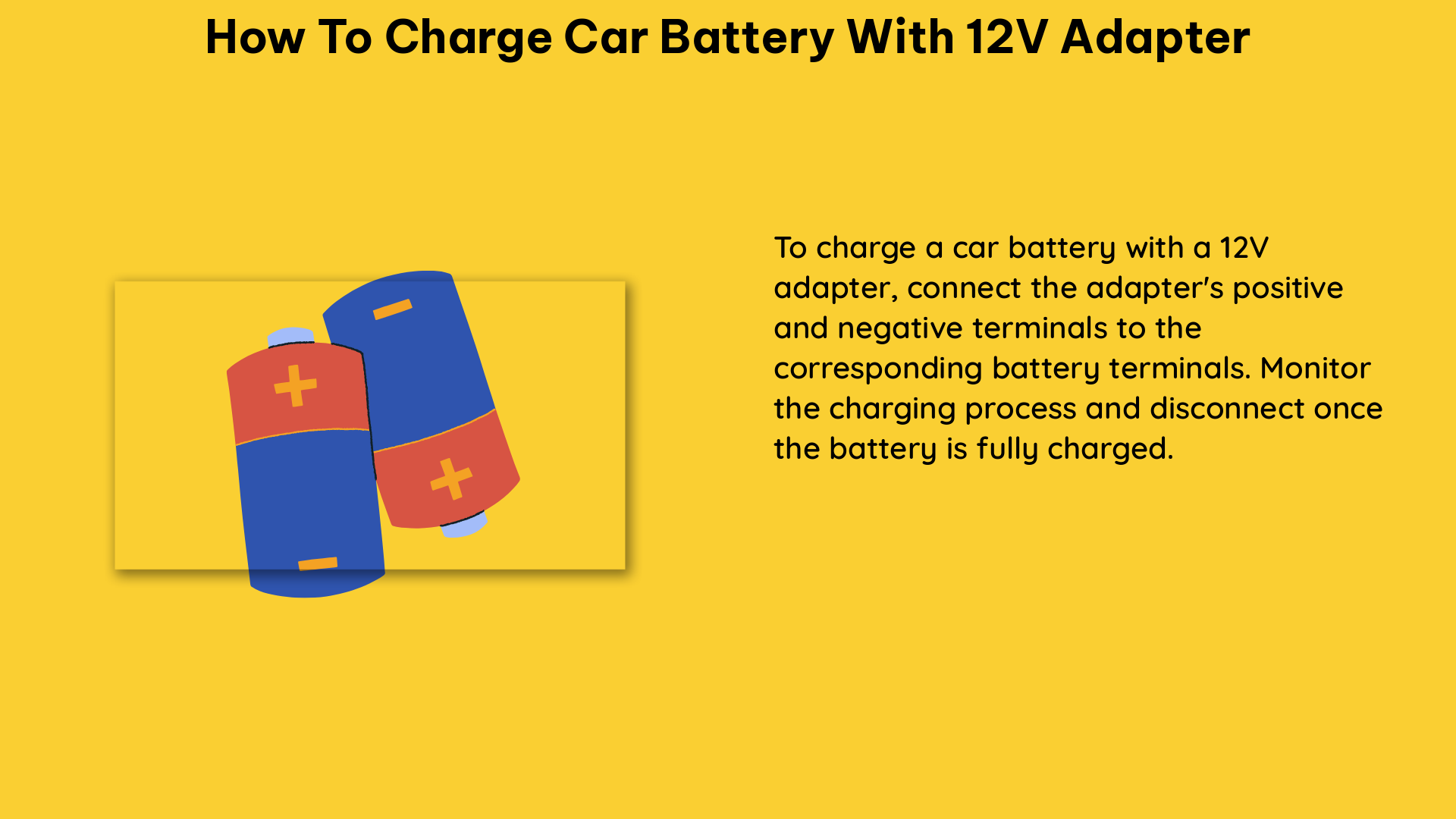Charging a car battery with a 12V adapter can be a convenient and cost-effective solution, but it requires careful consideration of technical specifications and proper safety precautions. This comprehensive guide will walk you through the step-by-step process, provide detailed technical information, and offer a DIY approach to building your own 12V car battery charger.
Choosing the Right 12V Adapter
When selecting a 12V adapter for charging your car battery, the most critical factor is the current (Amps) it can supply. A typical car battery requires around 10 Amps to charge fully. Therefore, you should look for a 12V adapter that can provide at least 10 Amps of current output. Additionally, ensure that the adapter has a constant current or constant voltage output, as lead-acid batteries like car batteries need an accurate constant voltage to charge efficiently.
Here are some key specifications to consider when choosing a 12V adapter for car battery charging:
| Specification | Recommended Value |
|---|---|
| Voltage | 12V |
| Current | Minimum 10 Amps |
| Output Type | Constant Current or Constant Voltage |
It’s important to note that using an adapter with insufficient current output can result in a slow or incomplete charging process, while an adapter with too much current can potentially damage the battery or pose a safety risk.
Preparing for the Charging Process

Before connecting the 12V adapter to your car battery, it’s crucial to take the necessary safety precautions and prepare the charging environment. Follow these steps:
- Park your car in a well-ventilated area, away from any flammable materials, and turn off the engine.
- Open the car’s hood and locate the battery.
- Inspect the battery for any signs of damage or corrosion. If you notice any issues, consult a professional before proceeding.
- Put on safety goggles and gloves to protect yourself from potential acid leakage.
Connecting the Cables
Once you’ve prepared the charging area, it’s time to connect the 12V adapter to the car battery. Follow these steps carefully:
- Connect the positive (red) cable from the 12V adapter to the positive terminal on the car battery, ensuring a secure connection.
- Connect the negative (black) cable to a metal part of the car’s chassis, away from the battery. This serves as the grounding point for the adapter.
Proper cable connection is essential to avoid sparks, short circuits, or potential damage to the battery or the adapter.
Charging the Battery
With the cables securely connected, you can now plug the 12V adapter into a power source and begin the charging process. Follow these guidelines:
- Set the charging mode and duration according to your battery’s specifications. Typically, you should select a low amp setting (around 2-5 Amps) and let the battery charge for several hours.
- Avoid overcharging the battery, as it can cause damage. Monitor the charging process and disconnect the adapter once the recommended charging time has elapsed.
The charging time may vary depending on the battery’s capacity and the adapter’s output. It’s essential to follow the manufacturer’s recommendations to ensure a safe and effective charging process.
Disconnecting and Testing
After the recommended charging time has passed, it’s time to disconnect the 12V adapter and test the battery’s performance. Follow these steps:
- Unplug the 12V adapter from the power source.
- Carefully disconnect the cables, starting with the negative (black) cable, followed by the positive (red) cable.
- Close the car’s hood and start the engine to test if the battery has been successfully charged.
If the engine starts and the battery appears to be functioning correctly, the charging process was successful. If you encounter any issues, it’s best to consult a professional for further assistance.
DIY Approach: Building a 12V Car Battery Charger
If you’re interested in a more hands-on approach, you can build your own 12V car battery charger using a 12V adapter, a diode, and a voltage regulator. Here’s a step-by-step guide:
- Gather the necessary components: You will need a 12V adapter, a diode (to prevent reverse current flow), a voltage regulator (such as a 7812 or LM317), and jumper cables.
- Connect the diode: Solder a diode to the positive (red) wire of the 12V adapter to prevent reverse current flow when the battery is connected.
- Add a voltage regulator: Connect a voltage regulator to the output of the 12V adapter to maintain a constant voltage.
- Connect the jumper cables: Attach jumper cables to the output of the voltage regulator and connect them to the car battery, following the same polarity as mentioned in the “Connecting the Cables” section.
- Test the DIY charger: Plug the 12V adapter into a power source and monitor the voltage and current to ensure they are within the safe limits for your car battery.
Building a DIY 12V car battery charger can be a rewarding project, but it requires a basic understanding of electronics and safety precautions. If you’re not comfortable with this approach, it’s recommended to use a commercially available 12V adapter for charging your car battery.
References
- How to charge a battery while supplying power to my device
- How to Charge 12V Car Battery with 19V Laptop charger – YouTube
- How to Charge a Car Battery with a 12V Adapter
- Charge car battery with lab bench power supply
- Can I charge a 12V car battery with a 16V 1.5A adapter?

The lambdageeks.com Core SME Team is a group of experienced subject matter experts from diverse scientific and technical fields including Physics, Chemistry, Technology,Electronics & Electrical Engineering, Automotive, Mechanical Engineering. Our team collaborates to create high-quality, well-researched articles on a wide range of science and technology topics for the lambdageeks.com website.
All Our Senior SME are having more than 7 Years of experience in the respective fields . They are either Working Industry Professionals or assocaited With different Universities. Refer Our Authors Page to get to know About our Core SMEs.